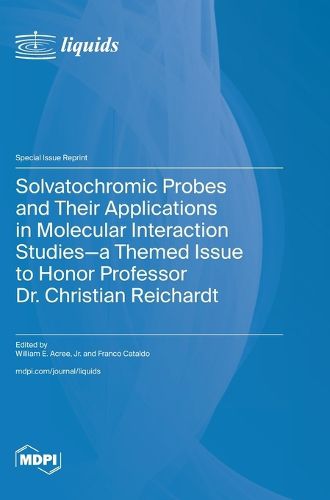Readings Newsletter
Become a Readings Member to make your shopping experience even easier.
Sign in or sign up for free!
You’re not far away from qualifying for FREE standard shipping within Australia
You’ve qualified for FREE standard shipping within Australia
The cart is loading…






This title is printed to order. This book may have been self-published. If so, we cannot guarantee the quality of the content. In the main most books will have gone through the editing process however some may not. We therefore suggest that you be aware of this before ordering this book. If in doubt check either the author or publisher’s details as we are unable to accept any returns unless they are faulty. Please contact us if you have any questions.
Solvent polarity and hydrogen-bonding character play important roles in determining the magnitude of the solute-solvent interactions that control chemical reaction rates and equilibrium concentrations of chemically special species dissolved in both water and organic mono-solvents, as well as in binary (and higher-order multicomponent) solvent systems and molecularly organized aqueous-surfactant mixtures. Spectroscopic methods employing solvatochromic probe molecules have provided valuable information in the form of empirical solvent polarity and hydrogen-bonding scales that can be used to understand and predict the effect of binary solvent composition on solute solubility, equilibrium constants, and chemical reaction rates, to investigate preferential solvation in binary solvent mixtures, and to examine interfacial regions of aqueous micelles formed by ionic surfactants.
This Special Issue contains five very informative review articles as well as ten original research papers and communications that report the synthesis of new solvatochromic probe molecules, measurement of new spectroscopic data, and development of new computational methods. The large range of topics covered illustrates that solvatochromic probe studies have been and still continue to be a very important and active research area. This Special Issue will be a valuable resource for researchers conducting solvatochromic probe studies.
$9.00 standard shipping within Australia
FREE standard shipping within Australia for orders over $100.00
Express & International shipping calculated at checkout
This title is printed to order. This book may have been self-published. If so, we cannot guarantee the quality of the content. In the main most books will have gone through the editing process however some may not. We therefore suggest that you be aware of this before ordering this book. If in doubt check either the author or publisher’s details as we are unable to accept any returns unless they are faulty. Please contact us if you have any questions.
Solvent polarity and hydrogen-bonding character play important roles in determining the magnitude of the solute-solvent interactions that control chemical reaction rates and equilibrium concentrations of chemically special species dissolved in both water and organic mono-solvents, as well as in binary (and higher-order multicomponent) solvent systems and molecularly organized aqueous-surfactant mixtures. Spectroscopic methods employing solvatochromic probe molecules have provided valuable information in the form of empirical solvent polarity and hydrogen-bonding scales that can be used to understand and predict the effect of binary solvent composition on solute solubility, equilibrium constants, and chemical reaction rates, to investigate preferential solvation in binary solvent mixtures, and to examine interfacial regions of aqueous micelles formed by ionic surfactants.
This Special Issue contains five very informative review articles as well as ten original research papers and communications that report the synthesis of new solvatochromic probe molecules, measurement of new spectroscopic data, and development of new computational methods. The large range of topics covered illustrates that solvatochromic probe studies have been and still continue to be a very important and active research area. This Special Issue will be a valuable resource for researchers conducting solvatochromic probe studies.